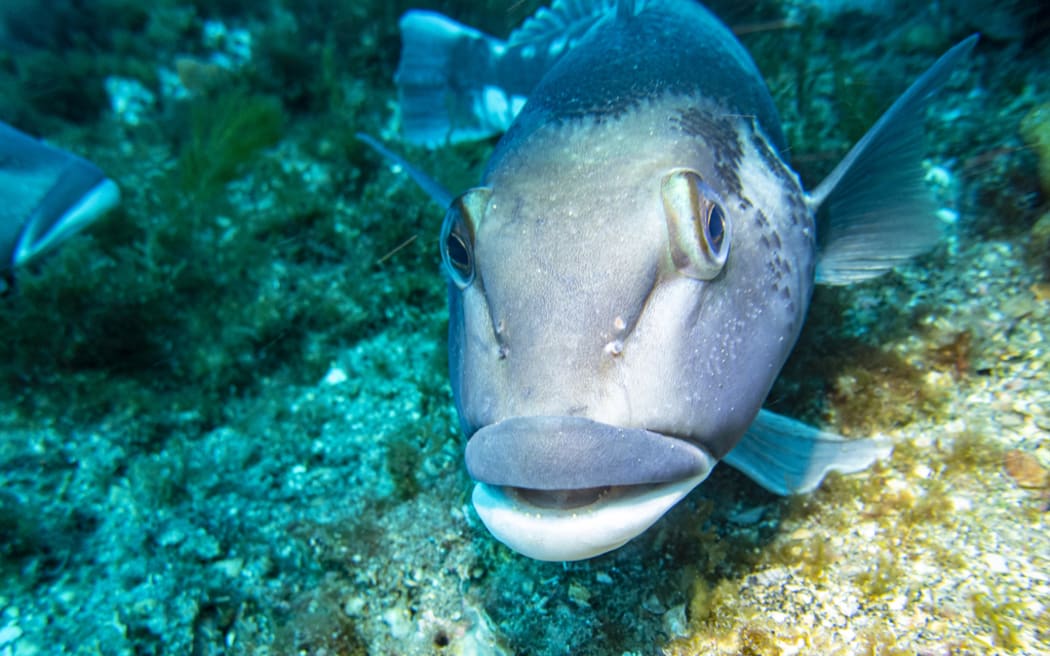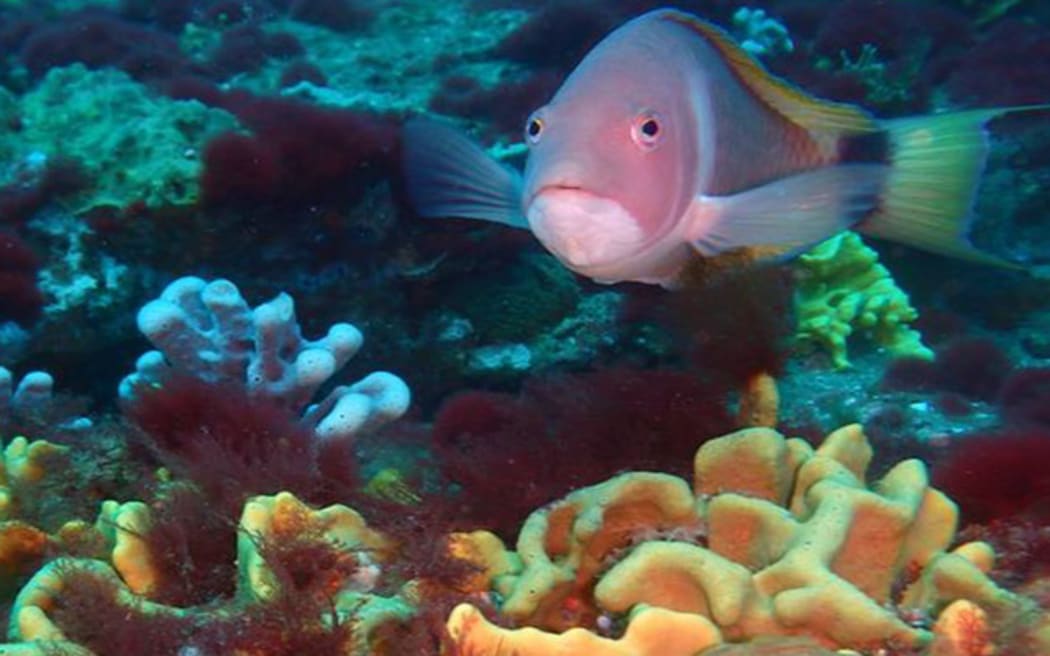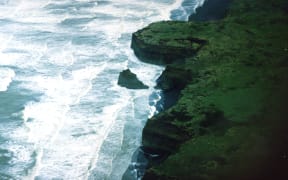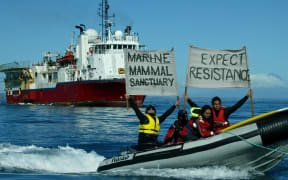
Blue Cod were the most common fish found on the Pātea reefs near the mining zone, with breeding nurseries found at four sites. Photo: File/LDR
Seabed mining should be banned in New Zealand as any economic benefits will not outweigh the effects of "environmental vandalism", South Taranaki District Council says.
The council's proposed submission to a parliamentary inquiry into seabed mining says it should not be allowed anywhere within New Zealand's waters up to 200 miles offshore.
Trans-Tasman Resources (TTR) wants to suck up 50 million tonnes of the seabed each year for 35 years in an area between 22km and 36km off Pātea.
After extracting iron, titanium and vanadium the mining ship would discharge 45 million tonnes of sediment back into the ocean, which TTR claims would settle harmlessly back on the seabed.
But STDC's draft submission described the likely effect of the sediment plume on nearby reefs as environmental vandalism.

"Environmental damage to the seabed itself and to some of the most threatened and rare species in the world, as well as potential cultural damage created by adverse effects on the food baskets of three iwi and many recreational fishers, mean that seabed mining must not go ahead in the South Taranaki Bight or anywhere else in New Zealand's exclusive economic zone."
Council officers told its iwi committee Te Kāhui Matauraura that STDC had been neutral on the issue but with more information available was now opposed.
Ngāti Ruanui representative Sandy Parata reminded Te Kāhui Matauraura that the iwi had been fighting seabed mining for 10 years and recalled initial support from STDC.
"The council came on at first then decided to get back on the fence, so we were left alone."
The Environmental Protection Authority (EPA) initially granted consents for the mining but in September 2021 - following a seven-year legal fight by a dozen iwi, fisheries companies and environmental groups - the Supreme Court finally overturned those consents and sent the application back to the EPA.
Parata said Ngāti Ruanui continued to oppose the renewed application.
"We battled it... through four courts, and won them all. And now they've [raised] their head yet again so we're ready to do battle again."
The submission has yet to be approved by the full council, but was unanimously supported by Te Kāhui Matauraura.

Scarlett Wrasse were the second-most numerous fish, found among the 39 separate species of sponges. Photo: File/LDR
Fellow Ruanui representative Graham Young offered to work with council staff to add a paragraph acknowledging the iwi's decade-long fight.
The iwi would also make its own submission to the Parliamentary inquiry, he said.
The government has already signed up to a moratorium on seabed mining in international waters until science-backed rules are in place.
But in May Labour, National and Act voted down a Te Pāti Māori bill to ban seabed mining in New Zealand, pending the inquiry into benefits and risks.
Now a wholly-owned subsidiary of Australian miner Manuka Resources, TTR has said opposition to seabed mining lacks scientific credibility.
TTR reckoned its South Taranaki project each year would earn $1 billion in export receipts, inject $250 million into the Taranaki and Whanganui economy, and bring almost $300 million in taxes and royalties.
But in its submission the council was dubious.
"TTR's persistence suggests that the financial returns from its proposal (to mainly overseas investors) would be considerable. The economic benefits to the South Taranaki District and New Zealand would be minimal in comparison."

The Supreme Court told the EPA that if it could not impose conditions that prevent environment harm, the discharges must be prohibited, and the mining application denied.
The court also found that the EPA must take a "broad and generous" view of its Treaty of Waitangi obligations and take into account tikanga and kaitiakitanga.
In February the National Institute of Water and Atmospheric Research (NIWA) said it had found an unexpected bounty of reefs teeming with life alongside the would-be mining area.
NIWA's sonar survey found the wide continental shelf of the Pātea Banks was studded with rocky reefs unusually far from the coast in a 'goldilocks zone' for sea life.
Shallow waters allow sunlight to reach the seabed, yet the reefs are far enough offshore to minimise sedimentation from rivers and erosion.
The survey found 14 reefs covered in kelp forests, macroalgal meadows, gardens of 39 species of sponge, and fields of bryozoans - simple sedentary animals originating some 460 million years ago.
Blue cod, scarlet wrasse, butterfly perch, leatherjackets and tarakihi dominated the 30 fish species identified, also including snapper, trevally, kingfish, and kahawai. There were blue cod nurseries at four sites.
Local Democracy Reporting is Public Interest Journalism funded through NZ On Air




